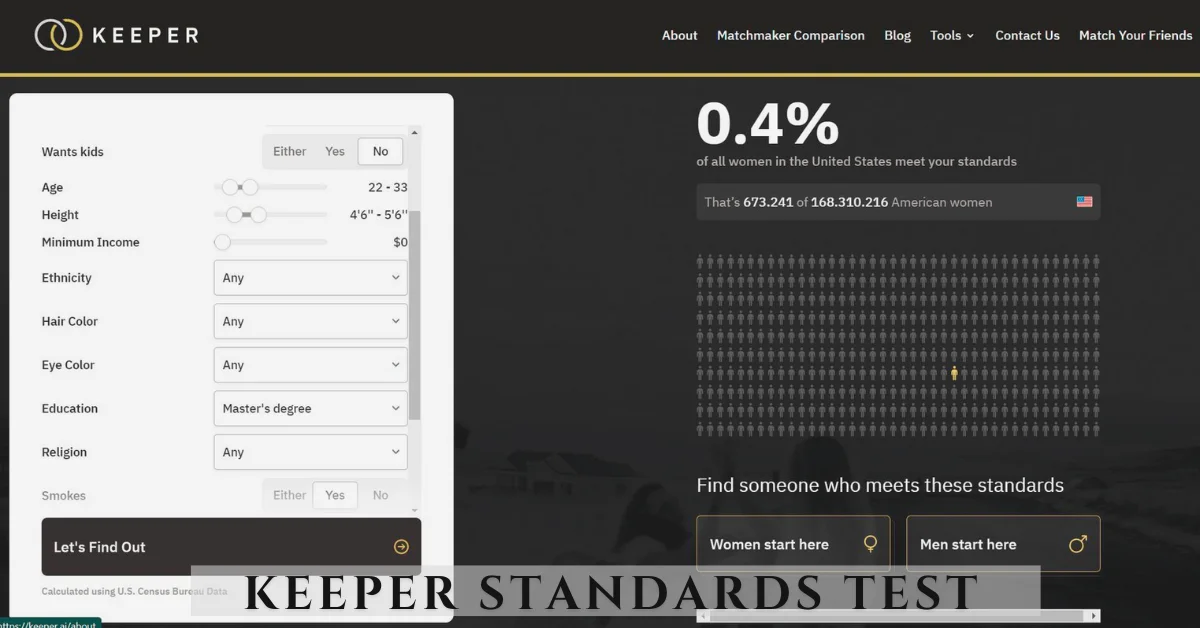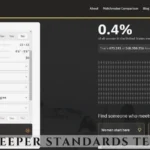Introduction to keeper standards test
Artificial Intelligence (AI) is transforming industries, enhancing lives, and reshaping the future. Yet with great power comes great responsibility. As AI becomes increasingly integrated into our daily routines, ensuring that these systems operate ethically is paramount. This brings us to the Keeper Standards Test—a vital framework designed to assess and uphold ethical principles in AI development.
The Keeper Standards Test offers a structured approach to ensure that AI technologies are not only innovative but also trustworthy. By evaluating various aspects of AI ethics, it acts as a safeguard against potential pitfalls associated with unchecked technological advancement. But what exactly does this test entail? And why do we need it now more than ever? Let’s dive deeper into the intricacies of this three-layered approach and explore how it can revolutionize our relationship with artificial intelligence.
The Need for Keeper Standards Test
The rapid rise of artificial intelligence has sparked vital conversations about ethics. As AI systems become more prevalent, the demand for accountability grows.
Tech companies are under scrutiny. Society expects them to ensure that their technologies operate fairly and transparently. Without proper standards, there’s a risk of harm—bias in algorithms can lead to unjust outcomes.
Moreover, public trust is essential for the successful integration of AI into everyday life. When individuals feel uncertain about how decisions are made, skepticism flourishes. This distrust can hinder innovation and progress.
A structured approach like the Keeper Standards Test addresses these concerns head-on. It offers a framework that prioritizes ethical considerations while developing AI technologies. By implementing such measures, organizations demonstrate commitment to responsible practices.
In this evolving landscape, establishing clear guidelines is not just beneficial—it’s imperative for sustainable growth and societal well-being.
Three Layers of Ethical AI
The concept of ethical AI revolves around a three-layer approach. Each layer plays a distinct role in ensuring the integrity and reliability of artificial intelligence systems.
The first layer emphasizes transparency and explainability. Users need to understand how decisions are made, fostering trust between humans and machines. Clear communication about algorithms is essential for accountability.
Next comes bias and fairness. AI must be trained on diverse datasets to avoid perpetuating stereotypes or discrimination. This layer ensures that all individuals receive equal treatment, regardless of their background.
Human oversight and accountability form the foundation of ethical practices in AI development. While machines can process vast amounts of data, human judgment remains crucial in reviewing outcomes, maintaining an ethical balance throughout the decision-making processes.
These layers together create a robust framework for responsible AI usage in our increasingly automated world.
1st Layer: Transparency and Explainability
Transparency and explainability form the backbone of ethical AI. When algorithms operate behind a veil of secrecy, it raises concerns about their intentions and reliability. Users deserve to understand how decisions are made.
This first layer demands that AI systems provide clear insights into their processes. It’s vital for building trust among users, developers, and stakeholders alike. Imagine implementing an algorithm that makes crucial life decisions without any insight into its workings; this can lead to skepticism and fear.
Explainability goes beyond just transparency; it involves breaking down complex models into understandable terms. This helps non-experts grasp the rationale behind outcomes, ensuring informed interactions with AI technologies.
By prioritizing transparency, organizations foster an environment where questions can be asked freely. This openness not only encourages better practices but also promotes continuous improvement in AI development as feedback is actively sought and valued.
2nd Layer: Bias and Fairness
Bias and fairness are critical components in the development of ethical AI systems. Algorithms can inadvertently perpetuate existing biases found in training data, leading to unfair outcomes. This layer emphasizes the importance of identifying and mitigating such biases.
Addressing bias requires a proactive approach during the design phase. Developers must analyze datasets for any skew that could produce discriminatory results. Incorporating diverse perspectives helps create more balanced algorithms.
Fairness isn’t just about eliminating bias; it also involves ensuring equitable treatment across different demographics. Regular audits should be conducted to evaluate performance against varied groups, ensuring all users receive fair outcomes.
Transparency plays a vital role here as well—stakeholders need insights into how decisions are made within AI systems. By understanding potential biases, companies can take steps to enhance fairness while fostering trust among users.
3rd Layer: Human Oversight and Accountability
Human oversight and accountability are crucial components of the Keeper Standards Test. Artificial intelligence systems can provide impressive outputs, but they still require human judgment to ensure ethical alignment.
AI decisions should not operate in a vacuum. Humans must be involved at every step, reviewing outcomes and questioning processes. This involvement helps catch unintended consequences that machines might overlook.
Furthermore, establishing clear lines of accountability is essential. When AI makes a mistake or causes harm, identifying who bears responsibility ensures that appropriate actions are taken. This transparency fosters trust among users and stakeholders alike.
Engaging diverse teams in oversight roles also enriches the decision-making process. Different perspectives lead to more balanced evaluations and mitigate risks associated with biased algorithms or data sets.
Human oversight acts as a safeguard against potential pitfalls while reinforcing the integrity of AI systems within our society.
Implementation of the Keeper Standards Test
Implementing the Keeper Standards Test requires a strategic approach. Organizations must first assess their current AI systems against the established criteria.
Training is essential. Teams need to understand how to evaluate transparency, bias, and human oversight effectively. Workshops and resources can enhance their skills in these areas.
Next, organizations should create a framework for regular assessments. This includes integrating the test into existing project lifecycles. Continuous monitoring ensures compliance with evolving ethical standards.
Collaboration is key as well. Engaging stakeholders across departments fosters diverse perspectives on AI ethics. Input from legal, technical, and social experts enriches the evaluation process.
Feedback loops are crucial during implementation. Gathering insights helps refine methodologies over time, ensuring that ethical considerations remain relevant in an ever-changing technological landscape.
Benefits of Using the Keeper Standards Test
The Keeper Standards Test offers a robust framework for assessing the ethical implications of AI systems. By implementing this test, organizations can ensure that their technologies align with societal values.
One significant advantage is enhanced trust. When stakeholders know that an AI system adheres to established ethical standards, they are more likely to engage with it positively. This trust fosters user adoption and loyalty.
Additionally, the test promotes consistency in AI development processes. With clear guidelines on transparency, bias mitigation, and accountability, teams can streamline their workflows while adhering to ethical principles.
Moreover, by addressing potential biases upfront, companies can minimize legal risks. This proactive approach not only protects users but also safeguards organizational reputation in an increasingly scrutinized landscape.
Adopting the Keeper Standards Test equips businesses with tools for responsible innovation while driving positive impact across various sectors.
Challenges and Criticisms
Despite its promising framework, the Keeper Standards Test faces several challenges in practical implementation. One major concern is the subjective nature of ethical standards themselves. Different stakeholders may have varying interpretations of what constitutes fairness or transparency.
Additionally, there are concerns about scalability. As organizations grow and technologies evolve, maintaining consistent application across diverse systems becomes complex. Ensuring that all AI models meet these standards can be a daunting task.
Critics also point to potential bureaucratic hurdles. The rigorous compliance process could slow down innovation and limit agility in developing new AI solutions.
Some argue that overemphasis on ethics might overshadow other critical factors such as efficiency and performance. Balancing ethical considerations with business objectives requires careful navigation to ensure neither aspect suffers unduly in pursuit of the other.
Conclusion
The Keeper Standards Test emerges as a pivotal framework for addressing the ethical complexities of artificial intelligence. By adopting its three-layer approach, organizations can ensure that their AI systems are not only efficient but also responsible and trustworthy.
This test promotes greater transparency, reduces biases, and emphasizes human oversight. As businesses increasingly rely on AI technologies, implementing these standards will be key in fostering public trust and accountability.
While challenges remain—such as potential resistance to change or the complexity of monitoring adherence—the benefits far outweigh the drawbacks. Embracing the Keeper Standards Test is a step toward a more ethical future in technology development. It encourages continuous evaluation and improvement while prioritizing societal values over mere efficiency.
As we advance into an era dominated by AI, frameworks like this are essential for guiding us through uncharted territories with integrity and respect for humanity’s diverse needs. Engaging with the concepts behind the Keeper Standards Test might just be our best chance at ensuring that these powerful tools serve everyone fairly.
ALSO READ: Dave Watkin Aggreg8: Revolutionizing Data Accessibility in Tech
FAQs
What is the “Keeper Standards Test”?
The Keeper Standards Test is a framework for evaluating ethical principles in AI development, focusing on transparency, fairness, and human oversight to ensure responsible AI use.
Why is the Keeper Standards Test necessary for AI development?
It ensures AI technologies are developed ethically, minimizing risks like bias and promoting trust, accountability, and fairness in AI systems.
What are the three layers of the Keeper Standards Test?
The test includes three layers: transparency and explainability, bias and fairness, and human oversight and accountability, forming a comprehensive approach to ethical AI.
How does the Keeper Standards Test promote fairness in AI?
By assessing and mitigating biases in AI systems, ensuring that algorithms treat all individuals equitably, and ensuring transparency in how decisions are made.
What are the challenges of implementing the Keeper Standards Test?
Challenges include subjective interpretations of ethical standards, scalability issues, and potential bureaucratic hurdles that could slow down innovation in AI systems.











